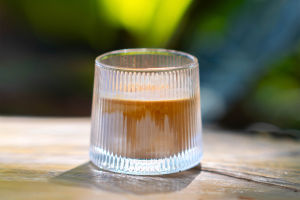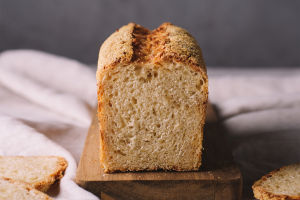Soy milk has long been celebrated for its health benefits, with soybeans being an excellent source of plant-based protein. It's rich in essential amino acids, dietary fiber, and vitamins, while also providing minerals like calcium and magnesium.
Drinking soy milk regularly can help maintain a balanced diet, lower blood pressure, and improve heart health by reducing blood lipid levels. For many, it's a nutritious and tasty alternative to dairy milk.
But when it comes to making soy milk at home, there are several methods to choose from. I decided to compare three different ways of preparing this creamy beverage to see which one would provide the best taste and texture. Here's what I discovered from my experiments.
Method 1: Using a High-Speed Blender to Cook and Blend
The first method involves using a high-speed blender to cook and blend the soybeans simultaneously. This method allows us to directly add either dry or soaked soybeans with water, blending them and heating at the same time. It's incredibly convenient, as it combines both the cooking and blending processes in one go. To make 100g of soaked soybeans, we'll need 600ml of water, and after adding them to the blender, the machine will grind and cook the soybeans for about 36 minutes.
This method is perfect for preserving the nutritional value of the soybeans because it doesn't involve separating the pulp and the liquid. The result is a rich, thick, and creamy soy milk with a strong bean flavor, which I found to be delicious. It retains most of the fiber, which can be beneficial for digestion. However, there might be some residual bean flavor, which could be a bit strong for those who prefer a milder taste.
Method 2: Cooking Soybeans First and Then Blending
The second method is a two-step process. First, you cook the soaked soybeans in water until they are soft. Once cooked, you blend the beans with water to create the soy milk. This method allows you to cook the soybeans beforehand, making it easy to store any extra cooked beans in the fridge for later use. It's a time-saving option if you want to prepare a larger batch and have some leftover for future meals.
While this method does result in a smooth and rich soy milk, the flavor wasn't as intense as the first method. The soy milk was less fragrant, and the bean taste was much milder. Additionally, the soy milk produced this way tended to have a bit more foam, and the texture felt slightly thinner compared to the first method. Still, it's a healthy, easy-to-make option that's perfect for everyday use.
Method 3: Blending and Straining Soy Milk
The third method is a bit more labor-intensive but offers a more traditional approach to making soy milk. In this method, after soaking the soybeans, you blend them with water to form a smooth mixture, then strain out the soybean pulp (known as okara). After straining, you heat the soy milk in a pot to cook it fully. The extra step of straining removes the fibrous pulp, resulting in a smooth and silky texture that's perfect for those who prefer a clean, creamy drink without any texture.
This method does take more time and effort, as it requires both blending and straining, followed by careful cooking to prevent the soy milk from boiling over. However, the flavor produced by this method is closer to traditional soy milk – smooth, fragrant, and creamy with a slight nutty taste. It's the closest to what we might find in a traditional Chinese or Asian-style soy milk, making it ideal if you're looking for an authentic taste.
Comparing the Results: Which Method is Best?
After trying all three methods, I've learned that each method has its own unique benefits, and it really comes down to personal preference. Here's what I found:
• Method 1 (blender and cook together) is the quickest and retains the most nutrients, offering a creamy and thick soy milk with a more robust flavor. However, it has a stronger bean taste, which might not be for everyone.
• Method 2 (cook first, then blend) is convenient for meal prepping and produces a soy milk that's lighter and less intense in flavor. It's ideal if you want a milder, more versatile drink.
• Method 3 (blend, strain, and cook) requires more time and effort, but it yields the smoothest and most fragrant soy milk, with a traditional taste that's perfect for those who enjoy a creamy, silky beverage.
Conclusion: Choose the Method That Suits You Best
Making soy milk at home can be a fun and rewarding experience, but the best method really depends on your preferences. Whether you're after a thick, nutrient-packed soy milk, a lighter option, or the smoothest, most authentic version, you have the flexibility to choose the method that fits your needs.
So, Lykkers, which method do you think you'd like to try? Will you go for the quick and easy method, or are you up for the more traditional process? No matter your choice, you're sure to enjoy a delicious, homemade drink that's both nutritious and satisfying!


